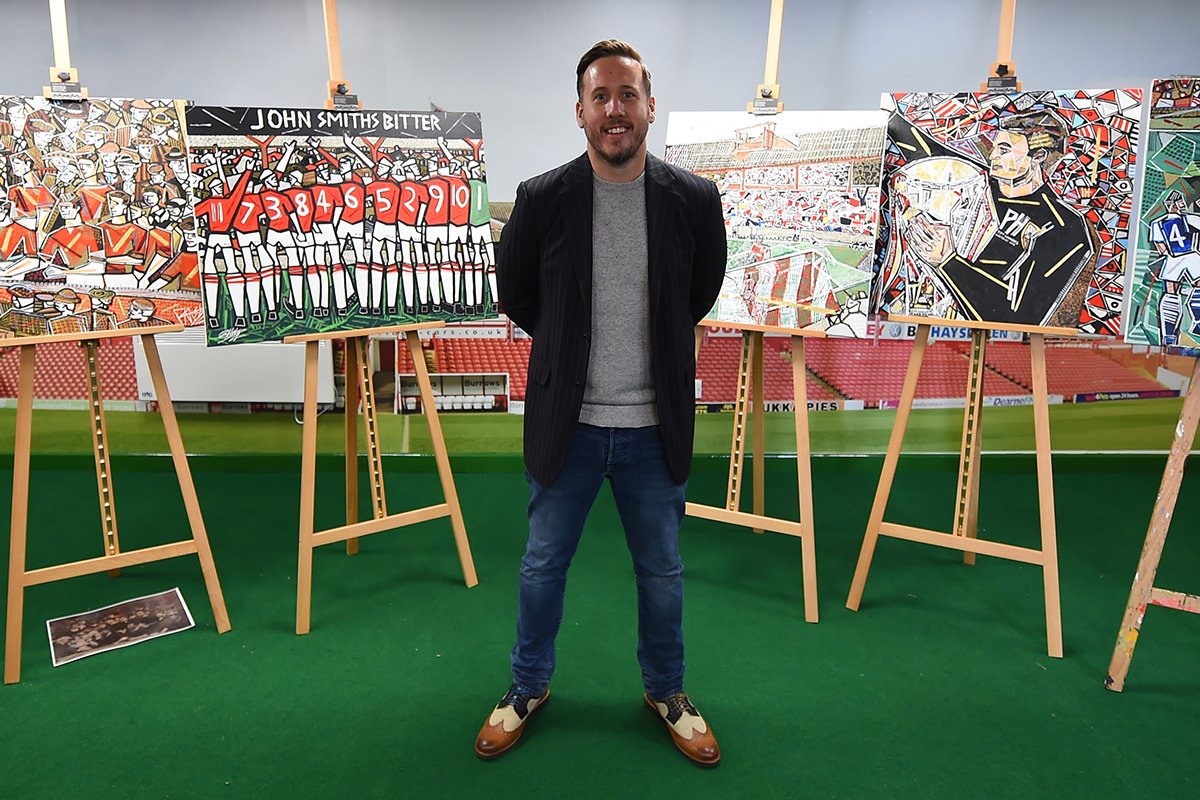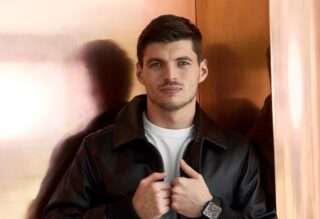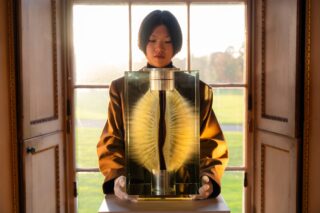This website uses cookies so that we can provide you with the best user experience possible. Cookie information is stored in your browser and performs functions such as recognising you when you return to our website and helping our team to understand which sections of the website you find most interesting and useful.
Sports artist Ben Mosley on action painting, Ed Sheeran and the beautiful game
By Rachel Ingram | 5 January 2018 | Culture
From speed painting pop stars to capturing the rush of a football match on canvas, Ben Mosley’s artistic niche is a stroke of genius
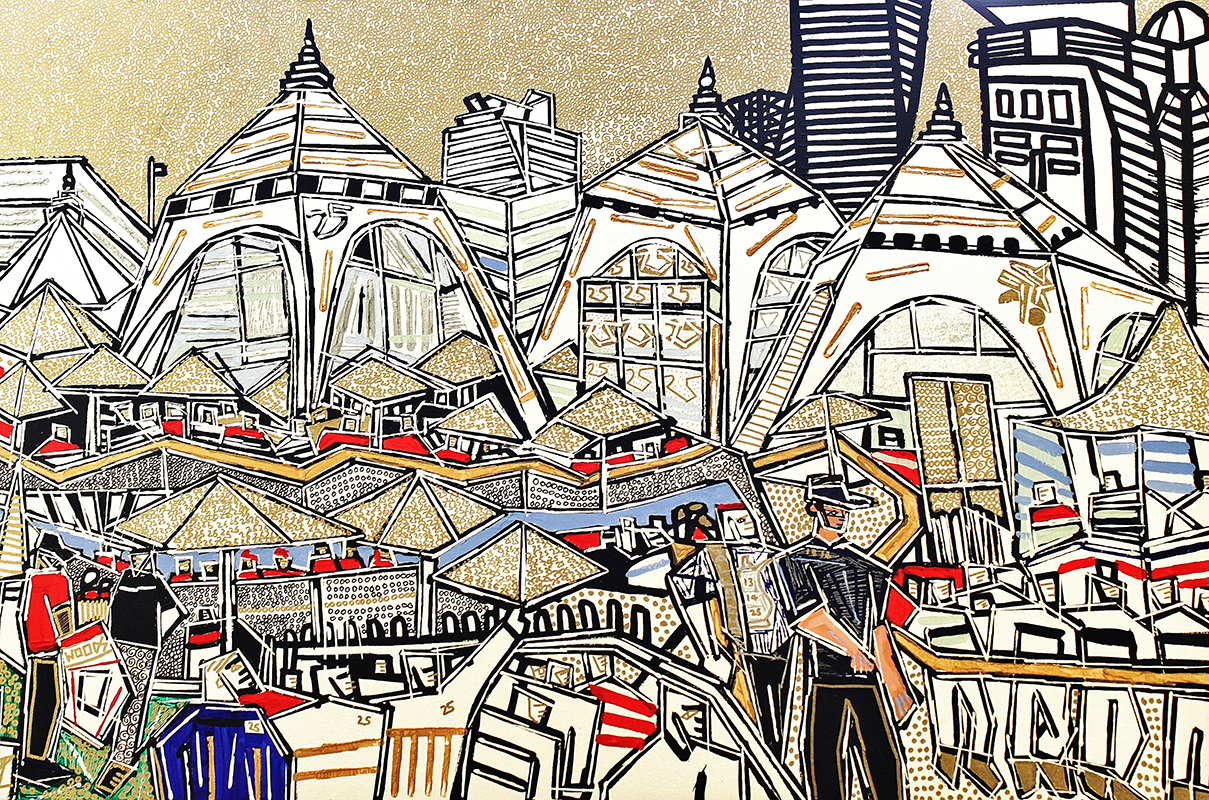
The roar of a crowd, the thrill of the game, the emotion of the players: there’s plenty of artistic inspiration in sport, insists Ben Mosley. As one of Britain’s only ‘sports artists’, Mosley occupies a unique space in the art world. He made his name live ‘action painting’ at sporting events across the UK – including the London Olympic Games – before dipping his brush into the celebrity world with portraits of the likes of BRIT Awards performer Ed Sheeran.
The result is nothing short of powerful. Abstract expressionism is perhaps the best way to describe Mosley’s work, which has become so well known in the sporting world that he’s been invited to collaborate with leading sports events and venues such as Wembley Stadium, where fans view a permanent display of his work to this day. Here, Tempus speaks to the artist about combining his passion with work and bridging the traditionally opposing worlds of art and sport.
How would you describe your style?
I am most definitely an expressionist artist. If I could relate my style to another artist, it would be a Picasso-meets-Keith Haring. My work is emotive, tribal and primitive. I like creating ‘team spirit’ images of people all together in a circle to represent friendship, unity and coming together to achieve something.
Do you enjoy live painting?
Live painting is very demanding because you’re there in front of people, putting yourself on the line. But then again, I like the performance side of it because I get to connect with people and show them something they’ve never seen before, in a way that I would do in my studio. I’m letting them into my world. The pressure also brings out the best in me. Many of my best pieces have been done live. I improvise. It’s spontaneous. Like a jazz musician will fly off on a tangent, its similar when I do live painting. I did a live painting of Ed Sheeran at the Natural History Museum. He was great to meet. The art piece was covered in golf leaf. It almost looked like an album cover. >>
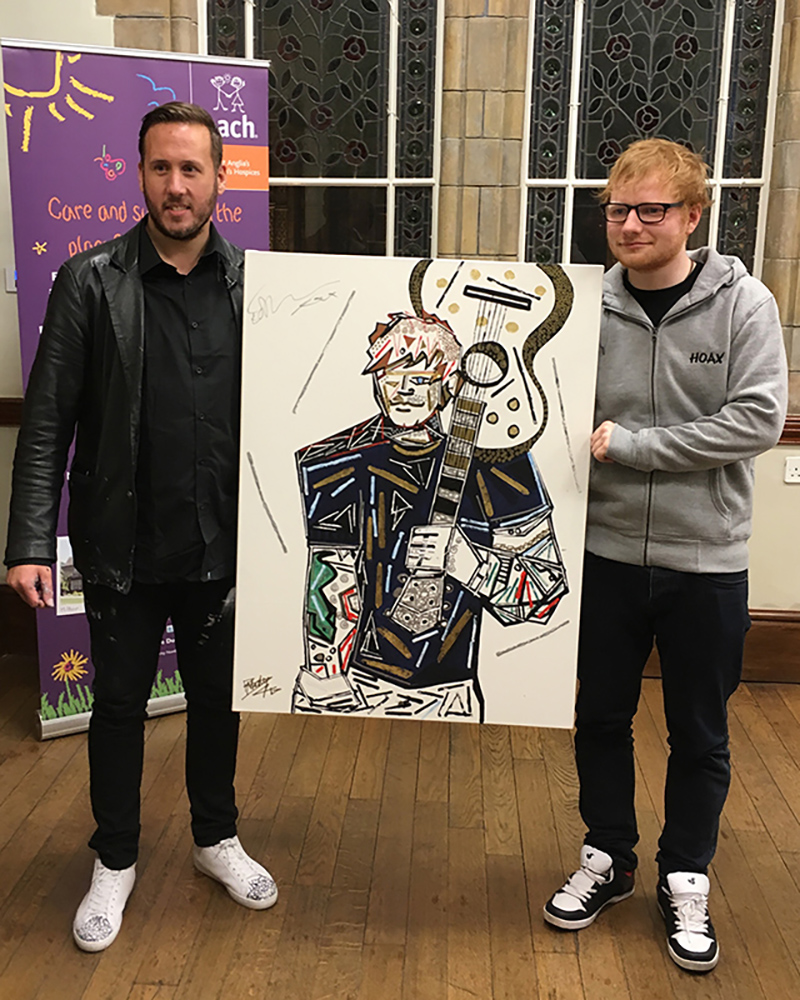
How did you come to work in the niche of ‘sports art’?
I was heavily involved with football at university, where I studied fine art. While I was captain of the football team, someone said to me ‘why don’t you paint about something you enjoy doing? Why don’t you paint about football?’ That was like a green light for me because throughout school, football had always been taboo for me, particularly when it came to art. I never thought I’d be allowed to paint about it so I never tried. I started painting about the relationships in football and the way the crowd comes together to celebrate. I experimented with mono-printing. From there I moved on to canvas drawing and looked at the team aspect of the sport and how football brings people together. From that moment, my work became more to do with support and relationships than players scoring goals.
Tell us about some of your favourite projects to date.
Currently, I do all sorts of things. I painted live at the Olympics in 2012, where I was one of the official artists. I did a huge mural depicting Team GB’s success and created a story of how the athletes come from us, the people. It shows a person walking up to a bridge, turning into a diver and diving off, transforming into a swimmer who then comes out of the water and becomes a cyclist, cyling through the city with the London skyline in the background. After that, I went on to work with Manchester United, Sir Alex Ferguson and Wayne Rooney to create pieces that were sold to help their foundation. I’ve done a lot of charity work and raised over £500,000 through paintings that have been auctioned o at the end of events.
Read the full interview in Tempus issue 54
